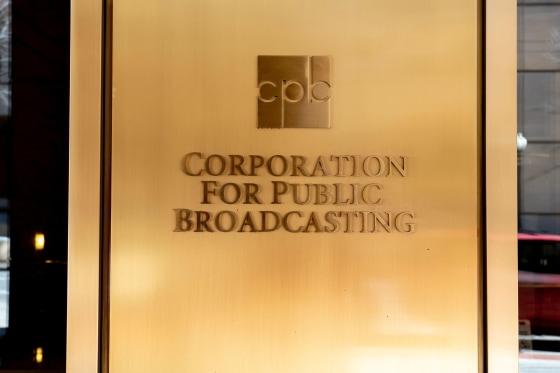Corporation for Public Broadcasting Faces Closure Amid Funding Cuts and Political Controversy
CPB’s Closure: Consequences of Congressional Funding Withdrawal and Political Challenges
The Corporation for Public Broadcasting (CPB) has declared it will halt all operations following Congress’s recent decision to eliminate its federal funding. This unprecedented development stems from years of escalating political scrutiny, particularly from former President Donald Trump and his supporters, who have repeatedly criticized the organization for alleged bias and fiscal mismanagement. The funding cut not only disrupts CPB’s ability to function but also jeopardizes the sustainability of key public media institutions such as PBS and NPR, which depend heavily on CPB’s financial backing. This shutdown represents a critical setback for public broadcasting’s mission to deliver impartial, educational, and culturally significant programming nationwide.
CPB leadership has voiced serious concerns about the void this closure will create, especially given the combined pressures of political opposition and sudden resource depletion. The immediate repercussions include:
- Significant decline in local journalism, particularly in underserved and rural areas
- Elimination of free educational content for students and families
- Mass layoffs affecting thousands of media professionals across the country
- Reduced dissemination of vital emergency information during natural disasters and crises
| Area of Impact | Resulting Effect |
|---|---|
| Community News | Severe reduction in regional news coverage |
| Educational Resources | Loss of accessible learning materials |
| Employment | Thousands of media jobs eliminated |
| Public Safety | Limited access to critical alerts and updates |
How the Defunding Crisis Threatens Public Media Access and Quality
For decades, public broadcasting has been a cornerstone for delivering educational programming, independent journalism, and cultural content throughout the United States. The recent congressional defunding of CPB places this vital ecosystem in jeopardy, risking the discontinuation of services provided by PBS and NPR to millions, especially in rural and economically disadvantaged regions where commercial media options are limited.
The fallout from this funding cut includes:
- Decreased availability of public media for low-income families and isolated communities.
- Loss of independent journalism that offers diverse viewpoints free from corporate or political influence.
- Closure or downsizing of local stations that serve as hubs for community engagement and localized content.
This controversy also prompts broader reflection on the future of American media, as public broadcasters have traditionally provided a counterweight to partisan and commercial news outlets. The table below outlines the immediate effects on various groups:
| Group Affected | Impact | Possible Consequences |
|---|---|---|
| Rural Populations | Restricted access to quality news and educational content | Expansion of “news deserts” |
| Local Broadcasting Stations | Loss of essential funding | Station shutdowns or forced mergers |
| Teachers and Students | Reduced support from media-based educational tools | Widening educational disparities |
| General Audience | Fewer independent and diverse media voices | Lower civic participation and awareness |
Political Dynamics Shaping Public Media Funding Decisions
Political influence has increasingly dictated the fate of public media funding, exposing a concerning overlap between governance and the flow of information. The recent congressional defunding of CPB—widely interpreted as politically motivated—illustrates how public broadcasters are vulnerable to partisan agendas. This move, amplified by direct criticism from former President Trump, exemplifies a growing trend where funding is used as a tool to silence or marginalize independent media voices. Such interference endangers not only the operational stability of public media but also the plurality of perspectives essential for a functioning democracy.
Several factors contribute to this politicization:
- Partisan Control of Budgets: Leveraging funding approvals to influence editorial content.
- Targeted Political Campaigns: Efforts to undermine the credibility of independent journalism.
- Legislative Gaps: Absence of legal protections insulating public media funding from political shifts.
- Manipulation of Public Opinion: Using rhetoric to erode trust in public broadcasters.
| Factor | Effect on CPB | Wider Consequences |
|---|---|---|
| Funding Reductions | Forced operational closure | Decline in local public media content |
| Political Targeting | Loss of public trust and credibility | Increased audience polarization |
| Legislative Vulnerabilities | Uncertain organizational future | Threat to journalistic independence |
Strategies to Preserve Independent Public Broadcasting Amid Political Challenges
Implementing robust structural protections is crucial to safeguard public broadcasting from partisan interference. Creating an autonomous oversight committee—comprising media professionals, community representatives, and independent experts—can help insulate editorial decisions from political pressures. Furthermore, establishing transparent, multi-year funding agreements with Congress would provide financial predictability and prevent abrupt budget cuts that threaten public media’s mission.
In addition to governance reforms, public broadcasters should strengthen ties with local communities to enhance their relevance and support base. Effective approaches include:
- Broadening educational and civic engagement initiatives
- Partnering with grassroots organizations to elevate marginalized voices
- Leveraging digital platforms to connect with younger and more diverse audiences
These efforts can foster deeper audience loyalty and cultivate a resilient grassroots movement advocating for sustained funding and editorial independence despite political headwinds.
| Recommended Action | Expected Benefit |
|---|---|
| Establish Independent Oversight Board | Protects editorial impartiality |
| Secure Multi-Year Funding Agreements | Ensures financial continuity |
| Enhance Community Engagement Programs | Builds broad-based audience support |
| Expand Digital Outreach | Attracts younger, diverse viewers |
Final Thoughts: Navigating the Future of Public Broadcasting
The looming shutdown of the Corporation for Public Broadcasting represents a pivotal moment in the evolution of publicly funded media in America. As debates over CPB’s role and financing continue, the fate of trusted institutions like PBS and NPR hangs in the balance. This development highlights the broader political and cultural struggles surrounding public media, raising urgent questions about equitable access to unbiased news and educational content in the coming years.







